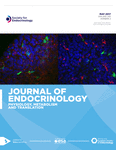Islet adaptations in fetal sheep persist following chronic exposure to high norepinephrine
- Xiaochuan Chen1,2,
- Amy C Kelly2,
- Dustin T Yates2,
- Antoni R Macko2,
- Ronald M Lynch3 and
- Sean W Limesand2⇑
- 1Chongqing Key Laboratory of Forage & Herbivore, College of Animal Science and Technology, Southwest University, Chongqing, China
- 2School of Animal and Comparative Biomedical Sciences, University of Arizona, Tucson, Arizona, USA
- 3Department of Physiology, University of Arizona, Tucson, Arizona, USA
- Correspondence should be addressed to S W Limesand; Email: limesand{at}email.arizona.edu
-
Figure 1
NE infusion inhibits insulin concentrations. Daily arterial means are presented for control (circles, n = 7) and NE fetuses (squares, n = 8). Values for plasma norepinephrine (A), plasma glucose (B), plasma insulin (C) and partial pressure of blood oxygen (PaO2, D) were determined for each day of treatment (x-axis). Difference (P < 0.05) during the infusion and post-infusion periods is identified with an asterisk.
-
Figure 2
Persistent enhancement of GSIS in NE fetuses. Plasma glucose and insulin concentrations are presented for the three GSIS studies, which are labeled above the graphs: before (GSIS-pre), 1 day after (GSIS-1d) and 5 days after (GSIS-5d) the chronic infusion. Baseline and hyperglycemic steady state period means for control (n = 6–7) and NE fetuses (n = 8) were analyzed within each GSIS study. Differences (P < 0.05) between control and NE fetuses within the period are identified (*).
-
Figure 3
Persistent enhancement of GPAIS in NE fetuses. Insulin concentrations are presented for the GPAIS studies in control (A, n = 6–7) and NE fetuses (B, n = 8). The arginine bolus is administered at time 0. GPAIS studies were conducted before (GPAIS-pre), 1 day after (GPAIS-1d) and 5 days after (GPAIS-5d) the chronic treatment. There was no study by time interaction. Study differences (*P < 0.05) for the average insulin concentration were observed in the NE fetuses but not controls.
-
Figure 4
Enhanced glucose-stimulated insulin secretion in NE islets. Pancreatic islets were isolated from control and NE fetuses (n = 6 animals/treatment). (A) Insulin secretion rates were measured in static incubations that contain 11.1 mmol/L glucose and various NE concentrations that ranged from 0 to 10 µmol/L (y-axis). The bar with asterisks indicate that the maximum insulin secretion rate was significantly different (P < 0.01) between control and NE islets. (B) The half maximal inhibitory concentration (IC50) was calculated for each treatment. Values represent means ± s.e.m., and the asterisks indicate a difference (P < 0.05) between treatment groups. (C) Islet insulin contents were not different between treatments.
- © 2017 Society for Endocrinology











